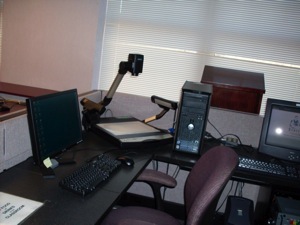Final Reflections
Writing assessment is a technology. Portfolios assessment is one particular form of assessment technology—a particular tool. Hawisher and Selfe (1997) implicate three challenges to developing “a responsible, professional vision of electronic portfolios” and portfolios that compliment technology accessible composition classrooms (p. 312). One challenge they implicate is particularly disturbing: “It is too easy to see computers and writing portfolios as ‘tools.’ We need instead to view them as the richly embroidered artifacts of a culture, artifacts which ultimately embody the values and ideological directions of our society” (p. 318).
*Please also see my final two blog entries, as they both contribute to my concluding thoughts.
This challenge remains unanswered in many courses and for many professionals, especially as some instructors care very little to actually learn how to use these implements even as tools, let alone artifacts (Rice, 2008). By bringing multimodal composition into a portfolio, students and teachers are more likely to take this call seriously; portfolios act as tools and artifacts of students’ work and history in a given course. Writing technologies are artifacts—contextual in nature—that facilitate writing. While the technologies themselves cannot always be included in the portfolio, the multimodal writing they produce acts as artifacts, telling of tool application and representing tools as artifacts for the course as well (Rice, 2008; Latour, 1996).
Accessible technology within a classroom, “when coupled with a portfolio approach to the course’s assessment, provides a rich field for cultivating students’ study of language, culture, and technology” (Wickliff, 1997, p. 337). Together, multimodal writing and portfolios create artifacts that demonstrate students’ cultural awareness and critical thinking through multiple rhetorical strategies. They emphasize envisioned writing from first concept to arguably final product, realizing all the steps in between and constructing artifacts of a specific time in a student’s life. Rhetorical situations guide students’ choices as well as instructors, especially when assessment procedures are called into play.

